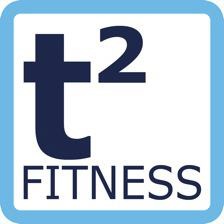In case you missed it see what’s in this section
Let's Talk

7 Things They Don’t Tell You About Starting a PT Business
Is fitness and wellbeing your passion? Have you considered becoming a PT before? Dream of running a business like a social media influencer? Well it can be done with hard work and determination. If you’re considering an enriching new career in personal training, here’s 7 things from T2 Fitness you may not have known about starting your new venture…
1. How to register for self-employment
When you become self-employed you need to speak with the HMRC to inform them you will be responsible for collecting, declaring and, ultimately paying, your own tax and National Insurance. To do this you need to do one of two things – Declare for ‘self-assessment’ or open up a Limited Company. Both are viable routes with Limited Companies offering a little more security to the company owner.
2. Finding yourself an accountant
Finding an accountant to take care of your financial books and filing with the HMRC on your behalf will save you far more money than they cost you. A good accountant, with an understanding of the fitness industry, will understand how to maximise your income and profit with areas for savings that you would never have known about. This should be one of your first jobs as a self-employed fitness professional.
3. How to correctly market yourself
You might be the best fitness professional in the world, but if no one knows who you are it won’t make a blind bit of difference. An understanding of building your website, strategically planning your social media and structuring the messages you want you spread to your audience should be a top priority, if you want to make an impact in the fitness world. Think about ‘what’s my niche’ and aim to ‘own’ this niche in your local area.
4. The ins and outs of rental agreements at gyms
The options for a self-employed PT are essentially to operate under a flat rental scheme with a gym, potentially starting on a sliding scale while you build your clientele, or to work out a PAYG with them. They will likely prefer the rental option as it allows them to ensure continual income from you but it is worth shopping around to find the best deal. You want to consider the demographic of the gym and if you are likely to build a thriving business there. You also want to consider how many other PTs are there already and how successful their businesses are. The number of trainers isn’t really an issue if they are all busy, as this indicates you can be busy too! Also consider the additional spend you may have in travel and parking. Finally, if you are self-employed you need to consider if you can bring clients in to the club who are not members as this may be a large part of your business. If you can’t train these at the gym, then where will you train these people?
5. What to do with your ‘downtime’
The hours between your sessions are vital to the success of your fledgling business. You’ll inevitably need to build your working hours around your clients’ working hours, and this means training them early morning, late evening and possibly weekends. The chances of you finding a full roster of clients to train between 9am and 5pm are somewhere between slim and none, especially early on.
So, you will have some hours to whittle away between early and late sessions. You’ll want to rest as your performance can suffer if you’re exhausted from always getting up early. The main thing is to set aside tasks for yourself to do in these hours that build towards your success. Could you spend a little more time researching techniques, planning programmes, finalising your accounts and strategizing your social media calendar? Maybe you could work out some special offers to entice people to train with you? Whatever you do make sure these hours are planned and accounted for so that you have a sense of obligation towards your own personal and business development.
6. The time commitment of 20 hours of PT
It is a sentiment echoed in PT courses across the world…’If I charge £30 a session and train 20 clients per week Ill be earning a full-time wage for a part-time job’.
The reality however is very different to the perception. In the first instance, building to a 20-hour PT week can take a long time. To consistently achieve 20 sessions per week with clients’ holidays, sickness, work schedules and seasonal commitments typically means you will probably need between 25-30 clients on your roster. Then you have to consider the hours it takes to plan and programme for all these people. – and potentially travelling to and from clients. It doesn’t sound like a large commitment in terms of time but this is also assuming that you don’t have three clients who want the same timeslot and that you don’t have any other commitments that might clash, such as a spinning class that you teach, or a sports team that you play on.
Consider how you might be able to maximise your time in the week to ensure all clients are serviced as they need to be and you don’t burn the candle at both ends for too long. Building a 20-30 hour PT business is absolutely possible and achievable but you must plan well for it and be prepared.
7. The time it takes to build your client base
The difficulty in building your client base in the early stages can be attributed to a few different factors…
- You have started at a new gym and are on the gym floor doing shifts for 35-hours per week. If you want to build your client base up you need to do so outside of your shift pattern. At this point you have limited times to train people and this can limit your growth.
- You have jumped straight in as a self-employed PT and have rented space at a private PT studio. You have no footfall in the gym and need to drum up business from outside to bring in to be trained.
- You have very few clients already on the books so have a small shop window from which to sell your services to others.
One piece of advice we give people just starting out is that regardless of if they have zero clients or 30, they should be training people when the gym is busy. This could be a friend, as spouse, a sibling or a training partner. Whoever it is, you should be showcasing your skills when there is the most footfall in the gym. Building your client base can be tough but once you build momentum, you should see a snowball effect.
Think you’ve got what it takes to become a successful Personal Trainer? Then get in touch with us about our study options for Level 2 Fitness Instructor and Level 3 Personal Trainer. We accept flexible payment plans, offer small cohorts for a more intimate learning experience and provide an online learning platform for you to learn theory in your own time and at your own pace.
Email [email protected] for more information.
Weather in Swindon
Listings





















